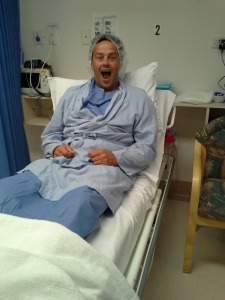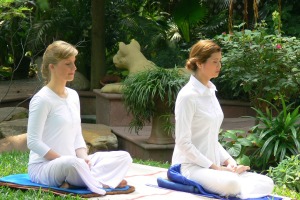Complementary and alternative medicine is gaining popularity around the world. Complementary and alternative medicine (CAM) therapy is often used today in addition to standard care. CAM therapy is also called “integrative medicine” which takes a natural approach to health. Alternative methods of treatments consist of a wide range of healthcare practices that have been developed for thousands of years through healers around the world who used herbs, pressure therapy, or other alternative methods to cure their patients. For example, these include Chinese herbal medicine or Traditional Chinese Medicine, which accounts for the majority of treatments in China, or the Ayurveda of India.
There are also other forms of popular alternative medicine that are widely recognized around the world, such as Homeopathy, hypnosis, yoga, meditation, massage therapy, herbal treatment, and acupuncture to name a few.
Complementary versus Alternative medicine
 Alternative medicine is so popular today that nearly 40 percent adults today use some kind of alternate method of treatment in addition to the mainstream or standard treatment procedures for a specific health condition or for overall health and wellbeing. Many people tend to think that complementary and alternative medicine are the same thing, but actually, these two terms do not mean the same thing. Complementary medicine is intended to be used in addition to the mainstream or standard treatments, not to replace it.
Alternative medicine is so popular today that nearly 40 percent adults today use some kind of alternate method of treatment in addition to the mainstream or standard treatment procedures for a specific health condition or for overall health and wellbeing. Many people tend to think that complementary and alternative medicine are the same thing, but actually, these two terms do not mean the same thing. Complementary medicine is intended to be used in addition to the mainstream or standard treatments, not to replace it.
Alternative medicine includes dietary supplements, herbal preparations, vitamin supplements, massages therapy, magnet therapy, and spiritual healing, which are generally not recognized by the medical community as standard or conventional medical approaches. (Medicinenet.com)
Complementary Alternative Medicine (CAM )
There are a wide variety of practices that fall under CAM therapy, with five main categories.
- Alternative medical system
- Mind-body intervention
- Biologically based therapies
- Manipulative methods
- Energy therapies
(Source: medicinenet.com)
1. Alternative medical system
 Alternative medical systems complete sets of theories and practices which evolved apart from and earlier than the standard or mainstream medical approach used in the United States. Some of the examples are homeopathic medicine, naturopathic medicine, Ayurveda traditional and Chinese medicine.
Alternative medical systems complete sets of theories and practices which evolved apart from and earlier than the standard or mainstream medical approach used in the United States. Some of the examples are homeopathic medicine, naturopathic medicine, Ayurveda traditional and Chinese medicine.
2. Mind-body intervention
These are various techniques used to enhance the mind’s capacity to affect symptoms and bodily functions. Some of the mind-body therapy includes meditation, prayers, mental healing and other forms of therapies that use creative outlets such as fine arts, music, dance and so on.
3. Biologically based therapies
Biologically based therapies use substances found in nature, such as herbs, food and supplements, to treat a patient.
4. Manipulative methods
These are methods based on physical movement or manipulation of certain body parts, such as massage therapy and chiropractic.
5. Energy therapy
Energy therapies use energy fields to treat patients. There are two types of energy therapy.
- Biofield therapies: This type of therapy treats patients by affecting the energy field that surrounds and penetrate the human body.
- Bioelectromagnetic-based therapies: Involves use of magnetic or electromagnetic fields and alternate or direct current.
Integrative Medicine& Holistic approach
 Integrative medicine includes an array of alternative methods, along with mainstream treatment. The focus is placed on the patient as a whole. The idea that a person’s mind has influence on his body gave rise to the integrative and holistic approach. For example, a patient receiving chemotherapy from a cancer treatment center with integrative health care programs may also be offered services such as meditation or acupuncture to help manage symptoms and side effects for patients.
Integrative medicine includes an array of alternative methods, along with mainstream treatment. The focus is placed on the patient as a whole. The idea that a person’s mind has influence on his body gave rise to the integrative and holistic approach. For example, a patient receiving chemotherapy from a cancer treatment center with integrative health care programs may also be offered services such as meditation or acupuncture to help manage symptoms and side effects for patients.
Naturopath
This approach focuses on noninvasive treatments to help your body do its own healing and uses a variety of practices, such as massage therapy, acupuncture, herbal remedies, exercise and lifestyle counseling. (Mayo Clinic)
Things to consider before receiving CAM therapy
Many of the technique discussed above are not based on modern scientific evidence or study. Some of these techniques may not be suitable for you. Also, researchers do not know effective some of the CAM treatments are or how safe they are. Below are a few things you need to pay attention to.
- If you are using or considering receiving CAM therapy find out about more about it.
- Tell your doctor about the CAM treatment you’re using. For example your dietary supplements, herbal products, yoga classes, etc.
- Discuss with your doctor about the safety or side effects of the CAM treatment you wish to receive.
- Ask your doctor if it’s likely to interfere with your current treatment or prescription.
- Choose CAM practitioners carefully – choose only those who are certified
- When seeking CAM treatment, speak with your primary health care provider or someone you believe to be knowledgeable about CAM regarding the therapy in which you are interested. Ask if they have a recommendation for the type of CAM practitioner you are seeking.(MedicineNet)
Priya Shetty, a famous writer once wrote at the scidev.net that “Traditional and modern medicine have much to offer each other despite their differences.”
 It is evident that a large number of people are seeking alternative methods of treatment in the United States. The widespread popularity of Integrative Medicine, including dietary supplements has brought attention to the benefits as well as the lack of knowledge and communication gap for health care professionals in mainstream medicine. Integrative Medicine can bridge the gap between the two separate methods of medical practices, with aim to benefit patients the most.
It is evident that a large number of people are seeking alternative methods of treatment in the United States. The widespread popularity of Integrative Medicine, including dietary supplements has brought attention to the benefits as well as the lack of knowledge and communication gap for health care professionals in mainstream medicine. Integrative Medicine can bridge the gap between the two separate methods of medical practices, with aim to benefit patients the most.
We will learn more about Integrative Medicine & Natural Health Practices from our next bi-weekly huddle webinar guest, Alicia Rocco. Alicia is a board certified integrated health practitioner and also a trusted life coach. Please join us for what is sure to be an informative and eye-opening hour!
Source: Nourish the Planet



